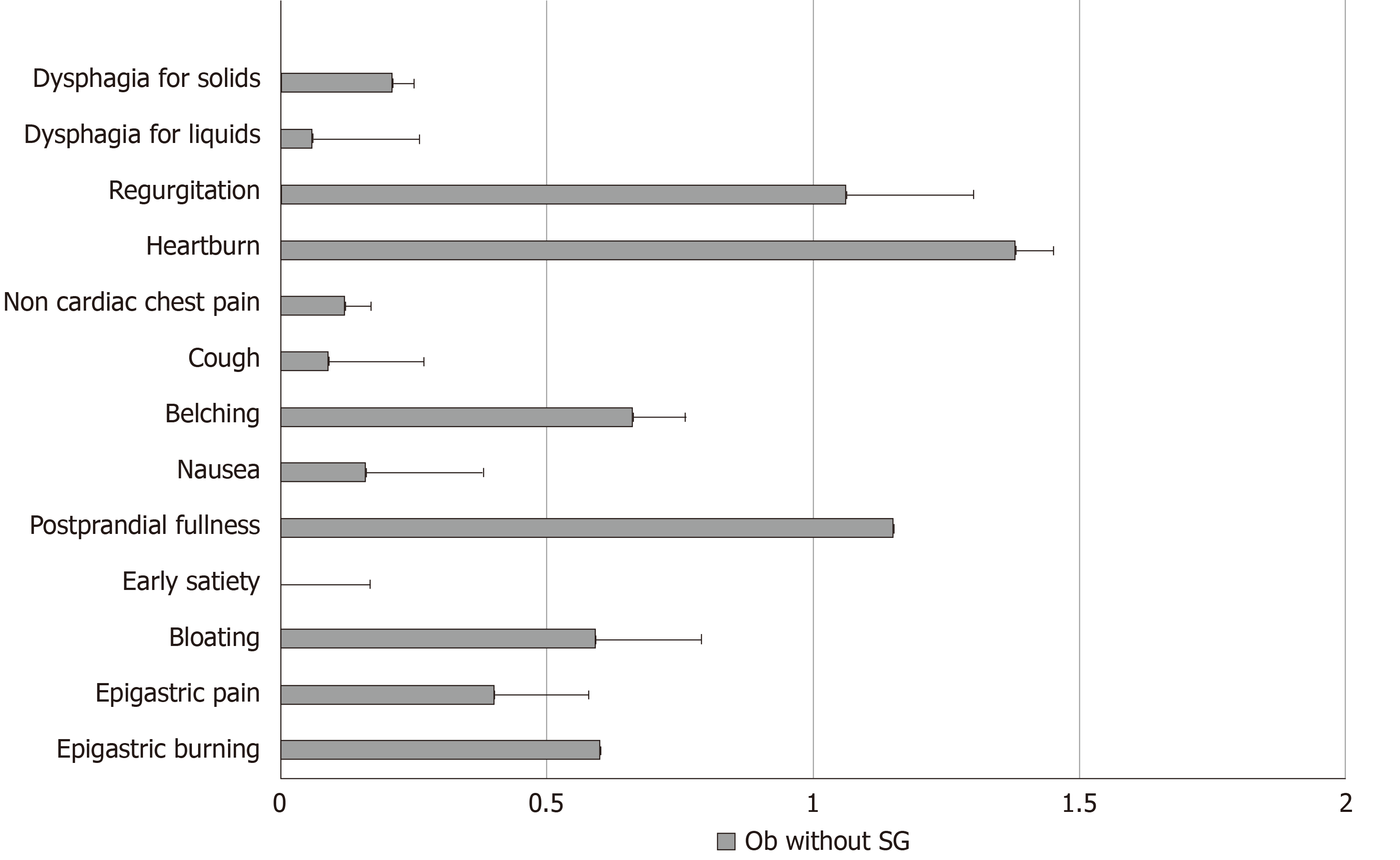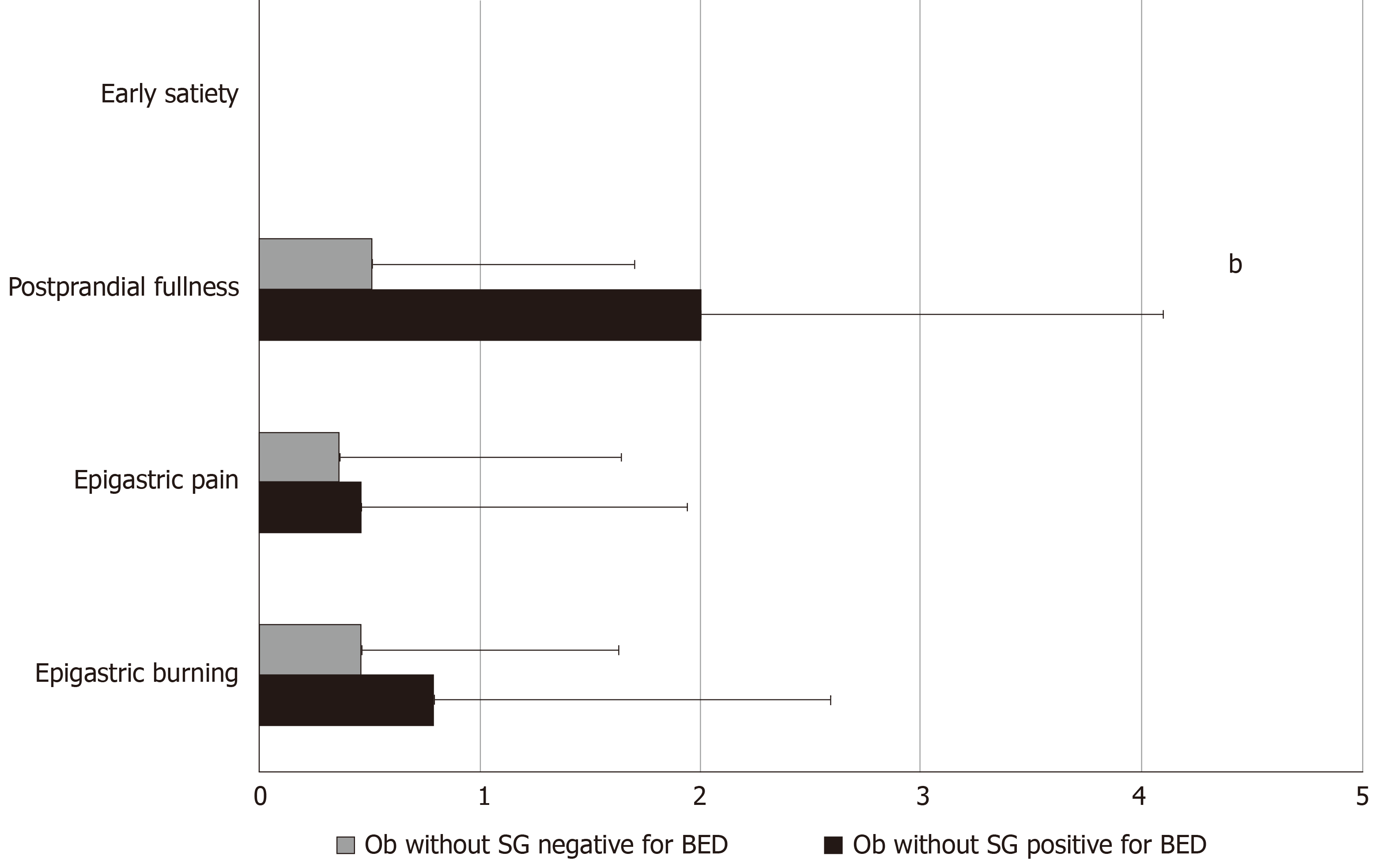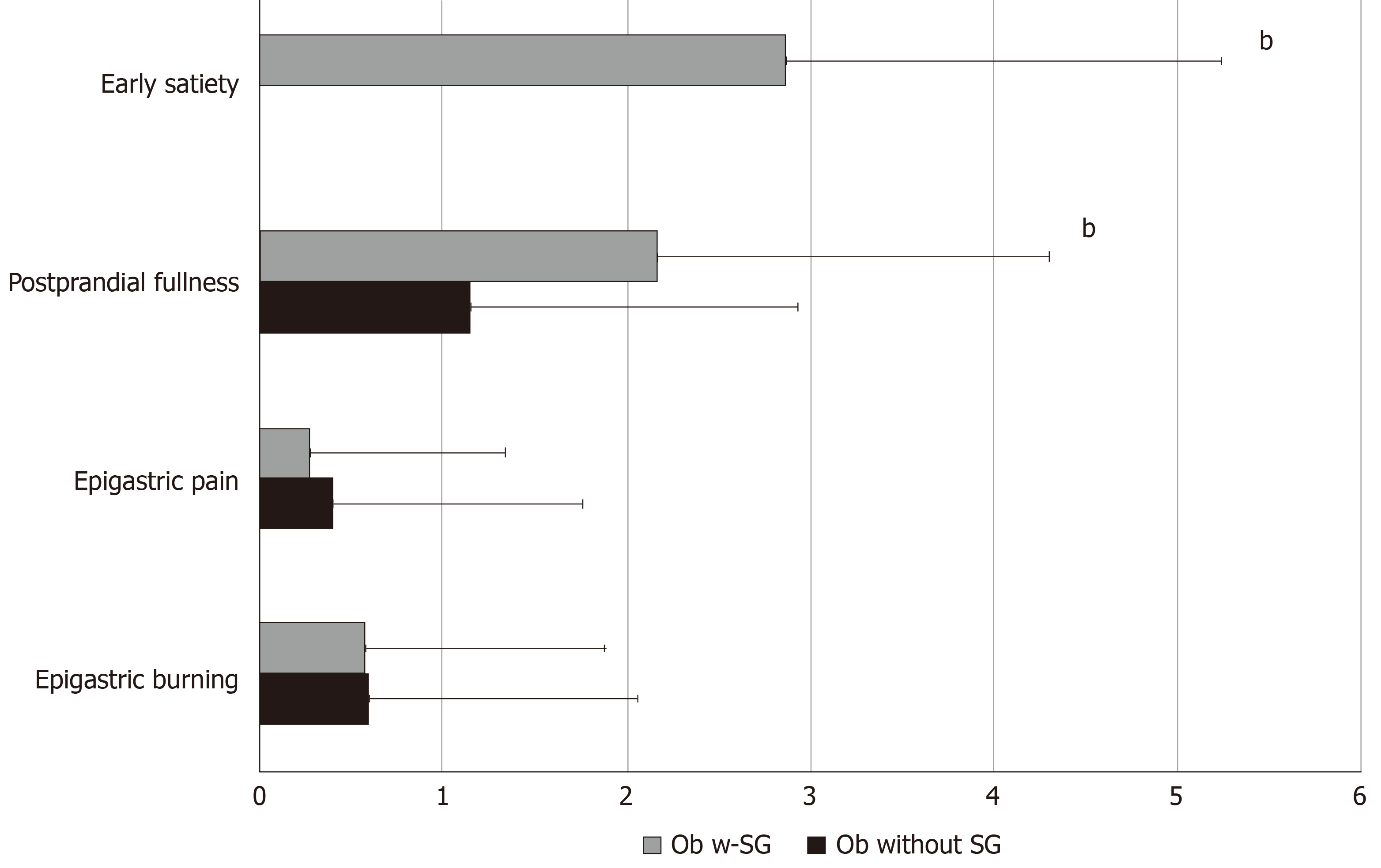Copyright
©The Author(s) 2020.
World J Gastroenterol. May 28, 2020; 26(20): 2632-2644
Published online May 28, 2020. doi: 10.3748/wjg.v26.i20.2632
Published online May 28, 2020. doi: 10.3748/wjg.v26.i20.2632
Figure 1 Frequency-intensity scores for selected upper gastrointestinal symptoms in obese patients without sleeve gastrectomy.
Ob: Obese patients; SG: Sleeve gastrectomy.
Figure 2 Frequency-intensity scores (m ± SE) of the 4 cardinal symptoms: early satiation, postprandial fullness, epigastric pain, and epigastric burning in obese patients without sleeve gastrectomy who were positive or negative for Binge eating disorder.
Ob: Obese patients; SG: Sleeve gastrectomy; BED: Binge eating disorder.
Figure 3 The frequency-intensity scores (m ± SE) of the 4 cardinal symptoms: Early satiation, postprandial fullness, epigastric pain, and epigastric burning in the studied obese patients without sleeve gastrectomy and obese patients with sleeve gastrectomy.
Ob: Obese patients; SG: Sleeve gastrectomy.
- Citation: Santonicola A, Gagliardi M, Asparago G, Carpinelli L, Angrisani L, Iovino P. Anhedonia and functional dyspepsia in obese patients: Relationship with binge eating behaviour. World J Gastroenterol 2020; 26(20): 2632-2644
- URL: https://www.wjgnet.com/1007-9327/full/v26/i20/2632.htm
- DOI: https://dx.doi.org/10.3748/wjg.v26.i20.2632















